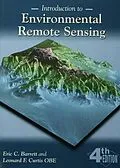Taking a detailed, non-mathematical approach to the principles on which remote sensing is based, this book progresses from the physical principles to the application of remote sensing.
Autorentext
E.C. Barrett Senior Research Fellow and Formerly Director , Centre for Remote Sensing, School of Geographical Sciences. L.F. Curtis OBE Formerly Exmoor National Park Officer and Honorary Senior Research Fellow, Department of Geography, both at the University of Bristol.
Inhalt
Abbreviations and acronyms. Part One: Remote sensing principles. Growth in awareness of environmental problems. Physical basis of remote sensing. Radiation characteristics of natural phenomena. Sensors for environmental monitoring. Sensor platforms, sensor packages and satellite data distribution. Calibration, interpretation and evaluation of remote sensing data. Remote sensing data interchangeability, preprocessing and processing. The analysis and interpretation of aerial photography. Digital data handling. Part Two: Remote sensing applications. Weather analysis and forecasting. Global climatology. Water in the environment. Soils and landforms. Rocks and mineral resources. Ecology, land use and crop protection. The built environment. Hazards and disasters. Problems and prospects. Bibliography. Index.
